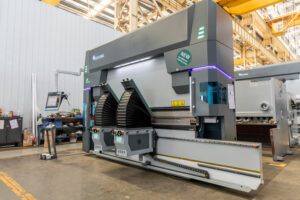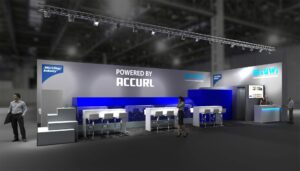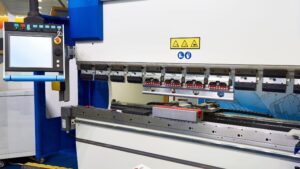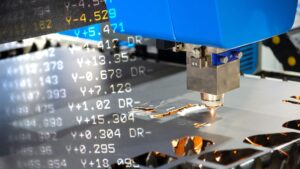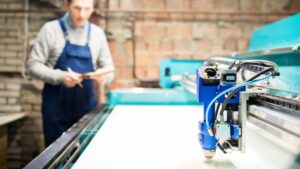In the realm of precision manufacturing, laser cutting stands as a pinnacle of accuracy and efficiency. This guide delves into the crucial aspect of laser cutting – the kerf. Understanding the nuances of laser cutting kerf not only enhances the accuracy of cuts but also optimizes material usage and cost-effectiveness. Here, we’ll explore what laser cutting kerf is, why it’s vital, and its impact on various materials and laser types.
What Is Laser Cutting Kerf?

The term ‘kerf’ refers to the amount of material that is removed by the laser beam during the cutting process. In the context of laser cutting, the kerf width is pivotal for achieving precision. It’s not just a cut line; it’s the difference between a perfect fit and a failed project. The kerf’s width varies based on multiple factors including the laser type, material properties, and cutting settings, making it a crucial element in laser manufacturing.
Why Is Understanding Laser Cutter Kerf Crucial?
The implications of not accounting for the kerf in laser cutting are far-reaching. Ignorance of kerf dimensions can lead to material waste, increased project costs, and inaccuracies in the final product. Understanding kerf is essential for achieving precise fits, especially in complex assemblies and designs where every millimeter counts.
How much is typical laser cutting kerf?
The typical kerf width in laser cutting usually ranges within a few millimeters, but this can significantly vary depending on the material thickness, laser beam width, and the type of laser used.
For example, a thicker material sheet may require a wider kerf to ensure clean cuts, while different laser machines, like CO2 and fiber lasers, exhibit distinct kerf characteristics due to their varying beam intensities and focal lengths.
How Is Kerf Width Determined in Laser Cutting?
Understanding how kerf width is determined is crucial for mastering laser cutting processes. Several factors, both physical and technical, play a role in this.
Factors Influencing Kerf Width
The kerf width in laser cutting isn’t a one-size-fits-all measurement. It’s influenced by a myriad of factors ranging from the technical nuances of the laser cutter to the inherent properties of the material being cut. For example, the focal length of the laser, the intensity of the laser beam, and even the type of laser technology (CO2 vs. fiber laser) significantly affect the kerf width.
Physical Factors:
- Laser Type: Different laser machines, such as CO2 and fiber lasers, have varying beam properties that impact kerf width.
- Material Properties: The type of material, its thickness, and its ability to absorb or reflect laser light determine the kerf width.
- Laser Beam Width: The diameter of the laser beam itself plays a crucial role in the resulting kerf size.
Technical Aspects:
- Cutting Settings: Laser power, speed, and the precision of the machine’s movement all contribute to the kerf’s dimensions.
- Focal Length of the Laser: This affects how concentrated the laser beam is at the point of contact with the material.
- Manufacturing Tolerance: The machine’s precision in maintaining consistent laser intensity and movement affects the kerf.
How Does Kerf Affect Material Choice?

When it comes to laser cutting, not all materials react the same way. Some materials are less susceptible to kerf issues, making them more ideal for precise applications.
Behavioral Attributes of Materials in Relation to Kerf:
- Material Thickness: Thicker materials might require a wider kerf for clean cuts, while thinner materials may be more forgiving.
- Material Type: Materials like plywood, metal, or plastic each respond differently to laser cutting, affecting the kerf and overall cutting process.
- Heat Absorption and Reflection: How a material interacts with the laser beam—whether it absorbs or reflects the heat—can significantly impact kerf width and quality.
What Does Kerf Allowance Mean?
Kerf allowance is a fundamental concept in laser cutting, pivotal for achieving precision in the final product. It refers to the additional material that must be accounted for to compensate for the material removed by the laser kerf. This allowance is essential for ensuring that the dimensions of the cut pieces align perfectly with the intended design specifications.
Calculating Kerf and Its Allowance
Calculating the right kerf allowance is a meticulous process that requires attention to detail and an understanding of the laser cutting process. The formula for calculating kerf allowance is straightforward yet requires precise measurements for accuracy.
Steps to Calculate Kerf Allowance:
- Measure the Hole Size (A): This is the dimension of the space created by the laser cut.
- Measure the Part Dimension (B): This refers to the intended size of the piece to be fitted into the hole.
- Calculate Kerf: The kerf is determined by subtracting the part dimension (B) from the hole dimension (A) and dividing the result by 2. (Kerf = (A-B)/2)
- Example Calculation: For a material where the hole measures 10mm and the part measures 9mm, the kerf would be (10mm – 9mm) / 2 = 0.5mm.
Adjusting for Kerf in Design Preparations
Incorporating kerf allowance into design preparations is crucial for the success of any laser cutting project. This involves adjusting the design dimensions to account for the kerf, ensuring that the final product fits together seamlessly.
Design Adjustments for Optimal Cutting Results:
- Kerf Compensation: This involves modifying the design dimensions to include the kerf allowance, ensuring parts fit perfectly post-cutting.
- Material Considerations: Different materials require different kerf allowances due to their unique properties and how they interact with the laser beam.
- Laser Settings Adjustment: Fine-tuning the laser settings, such as power and speed, can help achieve the desired kerf width, impacting the overall design accuracy.
What Factors Can Change the Kerf in Laser Cutting?
Kerf in laser cutting is not a constant; it varies based on several key factors. Understanding these variables is essential for precision in laser cutting processes.
Influential Variables in Kerf Width
Various elements play a role in altering the kerf width in laser cutting. These include:
- Material Type: Different materials, like metal, wood, or plastic, respond differently to laser cutting, affecting the kerf width and quality.
- Laser Focus: The focus of the laser beam can change the kerf width. A more focused beam creates a narrower kerf, while a less focused beam leads to a wider kerf.
- Cutting Speed: The speed at which the laser moves across the material impacts the width of the kerf. Faster speeds result in narrower kerfs, while slower speeds produce wider kerfs.
How Does Laser Power Influence Kerf?

The power setting of the laser cutter is a crucial factor in determining the kerf width. Different power settings can lead to variations in the kerf.
Relationship Between Laser Power and Kerf Dimensions:
- Higher Power Settings: Increased laser power typically results in a wider kerf as more material is burned away or melted.
- Lower Power Settings: A lower power setting might produce a narrower kerf, suitable for finer, more delicate cuts.
- Example Values: For instance, cutting a 5mm thick plywood with a high-power setting might result in a kerf of 0.6mm, while a lower setting might reduce the kerf to 0.4mm.
Overcoming Kerf-Related Issues in Different Materials
Each material presents its unique challenges when it comes to managing kerf in laser cutting.
Materials with Lower Susceptibility to Kerf Issues:
- Metals like Aluminum and Steel: These materials require precise power and speed settings to manage kerf effectively.
- Thinner Plastics and Polymers: These materials often have a more predictable kerf, making them easier to work with.
- Wood Varieties: Depending on the type of wood, the kerf can vary significantly, necessitating careful adjustments.
Kerf Characteristics in Common Laser-Cut Metals
Different metals exhibit varied kerf characteristics under the laser cutter.
- Steel: Often requires higher power settings, resulting in a wider kerf.
- Aluminum: Can be cut with lower power, leading to a finer kerf.
- Copper: Presents unique challenges due to its high reflectivity and thermal conductivity, affecting the kerf width.
Laser Cutting Kerf in Plastics and Polymers
Plastics and polymers like acrylic have their specific kerf considerations.
- Acrylic: Tends to have a clean, narrow kerf with the right laser settings.
- Other Plastics: Require careful balancing of power and speed to achieve the desired kerf without melting or warping the material.
Special Considerations for Cutting Composites and Laminates
Composites and laminates need special attention when it comes to kerf management.
- Challenges: These materials can have layers with different properties, affecting how the laser interacts with them.
- Strategies: Adjustments in laser settings and cutting techniques are crucial for managing the kerf effectively in these complex materials.
Practical Guide to Laser Cutting with Kerf in Mind
Achieving precision in laser cutting necessitates a deep understanding of how kerf affects the entire process. This section will simulate a real-life situation, providing a case-study-like approach to managing kerf effectively.
Pre-Cut Planning for Optimal Kerf
Preparation before the actual cutting process is pivotal in managing kerf. Key aspects to consider include:
- Material Selection: Choose materials that align with the project requirements and are compatible with the laser’s capabilities. For example, consider a project involving intricate designs on 3mm thick acrylic sheets. Acrylic is a popular choice for laser cutting due to its clean edges and smooth finish after cutting. Its predictable kerf characteristics make it easier to account for the kerf in design.
- Design Margins: Adjust design margins to account for the kerf, ensuring the final dimensions are precise. In our acrylic project, if the design requires interlocking parts, the kerf width should be factored into the design file. For instance, if the laser kerf width is estimated to be 0.2mm, the design file should be adjusted accordingly to ensure a snug fit of the interlocking pieces.
- Machine Setup: Properly calibrating the laser cutter is crucial for consistent kerf width. Ensure the laser focus is adjusted according to the thickness of the acrylic, and the cutting bed is perfectly level to avoid any discrepancies in the kerf width.
Step-by-Step Laser Cutting Process Considering Kerf
A detailed walkthrough of the cutting process, highlighting the critical role of kerf, includes:
- Design Analysis: Review the design to ensure it accounts for kerf. For the acrylic project, double-check that the design compensates for the 0.2mm kerf, especially in areas where precision is crucial for the assembly of the final product.
- Material Placement: Position the material on the laser bed correctly to ensure uniform cutting. For acrylic sheets, ensure they lie flat on the bed to avoid any focal length discrepancies that can alter the kerf width.
- Laser Setting Adjustments: Configure the laser for optimal power, speed, and focus for the specific material and kerf requirements. Acrylic requires a lower power setting to achieve a smooth edge without burning or excessive melting.
- Test Cuts: Perform test cuts on scrap material to fine-tune kerf width. This step is essential to validate the kerf width and make any necessary adjustments to the design file or laser settings.
- Final Cutting: Execute the cutting process while monitoring for any deviations or issues related to kerf. Continuously observe the cutting process to ensure the kerf remains consistent throughout the sheet.
Post-Cutting Kerf Assessment and Quality Checks
After the cutting process, it’s essential to assess the accuracy of the kerf:
- Visual Inspection: Check for uniformity in the kerf along the cut lines. Inspect the edges of the acrylic pieces for consistency and precision, ensuring that the kerf width is uniform across different parts of the design.
- Fit Test: Assemble parts to verify that the kerf allowance was correctly calculated and applied. Test the interlocking pieces for a snug fit, ensuring that the adjustments made for the kerf in the design file translate effectively into the physical product.
- Adjustments if Needed: Make any necessary adjustments to the design or machine settings for future cuts. If discrepancies are found, recalibrate the laser settings or revise the design file to compensate for any variations in kerf width observed.
The Challenge of Tapered Kerf in Laser Cutting

Tapered kerf can be a significant challenge in laser cutting, where the kerf width varies along the depth of the material.
- Causes: Tapered kerf can result from incorrect laser focus, uneven material surface, or inappropriate cutting speed. In the case of acrylic, an incorrect focal length setting can cause the laser to cut at an angle, resulting in a tapered kerf.
- Remedies: Adjusting the laser focus, ensuring material flatness, and calibrating cutting speed can help mitigate this issue. For the acrylic project, ensure that the laser focus is precisely calibrated for the 3mm thickness, and the material is flat and stable on the cutting bed.
Checklist for Optimizing Laser Beam Perpendicularity
Ensuring the laser beam is perfectly perpendicular to the material surface is crucial for consistent kerf width. Key checks include:
- Laser Alignment: Regularly check and adjust the laser to ensure it’s perpendicular to the cutting surface. For acrylic cutting, use a laser alignment tool to check that the beam is hitting the center of the lens and is perpendicular to the work surface.
- Focus Accuracy: Verify that the laser’s focus point is correctly set for the material’s thickness. Use a focus gauge specifically designed for the 3mm
- Focus Accuracy: Verify that the laser’s focus point is correctly set for the material’s thickness. Use a focus gauge specifically designed for the 3mm thickness of the acrylic to ensure optimal focus.
- Bed Leveling: Ensure the cutting bed is level to maintain consistent focus across the material. Regularly check the flatness of the bed and adjust as necessary, especially when working with larger sheets of acrylic where even slight variations in bed level can affect the kerf width.
Advanced Tips and Tricks for Kerf Precision
Gaining mastery over kerf in laser cutting involves more than just understanding its basics. Here, we explore expert advice and unconventional techniques that can minimize kerf variance, enhancing the overall quality of laser-cut pieces.
Software and Digital Tools for Kerf Compensation
Modern technology offers various software solutions that aid in kerf compensation, crucial for precision in laser cutting.
Programs and Features:
- CAD Software: Tools like AutoCAD and SolidWorks allow designers to adjust their designs to account for the kerf.
- Laser Cutting Software: Programs like LightBurn and Adobe Illustrator offer features to adjust for kerf directly in the cutting file.
- Simulation Tools: These help predict how different materials and settings will affect the kerf, allowing for preemptive adjustments.
Maintenance Tips for Consistent Kerf in Laser Cutting
Consistency in kerf width is as much about maintenance as it is about the initial setup.
- Routine Checks: Regularly inspecting and calibrating the laser cutter ensures it operates at peak efficiency.
- Cleanliness: Keeping the laser and its components clean prevents any distortions in the laser beam, which can affect kerf.
- Lens and Mirror Adjustments: Ensuring these are correctly aligned and free of debris is crucial for maintaining a consistent kerf.
Conclusion
Throughout this guide, we have explored the intricacies of kerf in laser cutting, from its definition to advanced strategies for its management. Key takeaways include:
- Importance of Kerf Precision: Understanding and accurately calculating kerf is vital for achieving the desired accuracy in laser-cut pieces.
- Role of Equipment and Materials: The type of laser cutter, its settings, and the material being cut significantly influence kerf.
- Advanced Strategies: Utilizing software tools for kerf compensation and adhering to regular maintenance routines can significantly enhance kerf precision.
In the dynamic field of laser cutting, mastering kerf is an ongoing journey. Continuous learning, experimentation, and adapting to new techniques and technologies are essential for staying at the forefront of precision cutting. Whether you’re a seasoned professional or a novice, understanding and applying these principles will undoubtedly lead to better results and a deeper appreciation for the art and science of laser cutting.


